The Changing Attitudes Toward Chinese Property Developers In Singapore
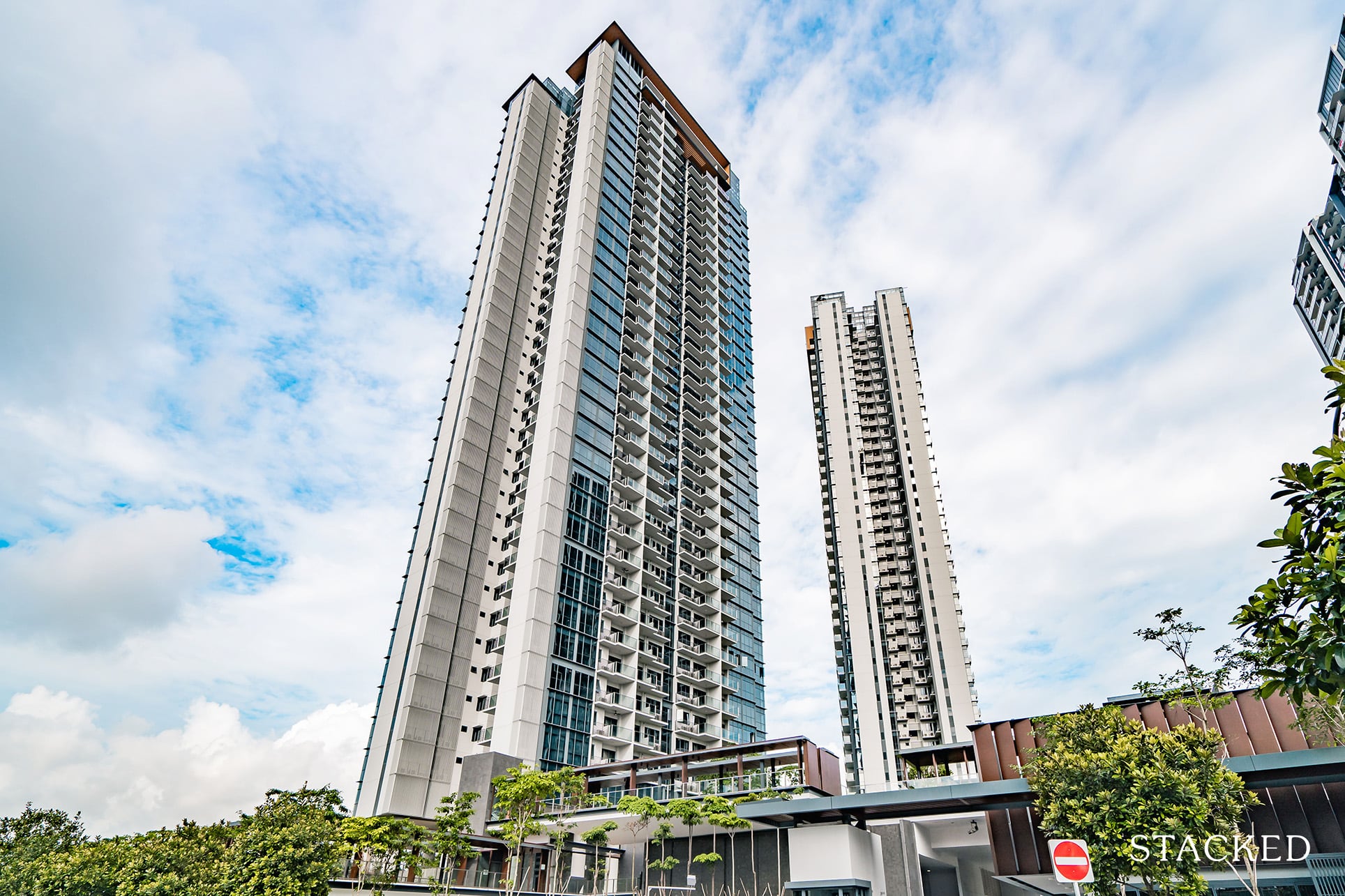
Get The Property Insights Serious Buyers Read First: Join 50,000+ readers who rely on our weekly breakdowns of Singapore’s property market.
A seasoned content strategist with over 17 years in the real estate and financial journalism sectors, Ryan has built a reputation for transforming complex industry jargon into accessible knowledge. With a track record of writing and editing for leading financial platforms and publications, Ryan's expertise has been recognised across various media outlets. His role as a former content editor for 99.co and a co-host for CNA 938's Open House programme underscores his commitment to providing valuable insights into the property market.
When Chinese developers first entered the Singapore market, there was some skepticism involved. It didn’t help that, during the en-bloc fever of 2017, Chinese developers copped a lot of the blame for pushing up home prices (even though if you read the report, you’ll see that Chinese properties were generally cheaper than local counterparts).
But as of 2024, we’ve seen a gradual shift in perspective, from Chinese developers being a foreign disruption to an everyday part of our built environment. Here are some perspectives from the ground:
Some initial negativity in 2017
2017 saw a wave of en-bloc sales, largely driven by Chinese developers purchasing existing properties or from land sales. While the exact beginning of this is hard to pinpoint, awareness first began due to a Cushman & Wakefield report, which showed land prices had risen by around 29 per cent compared to plots sold five years prior.
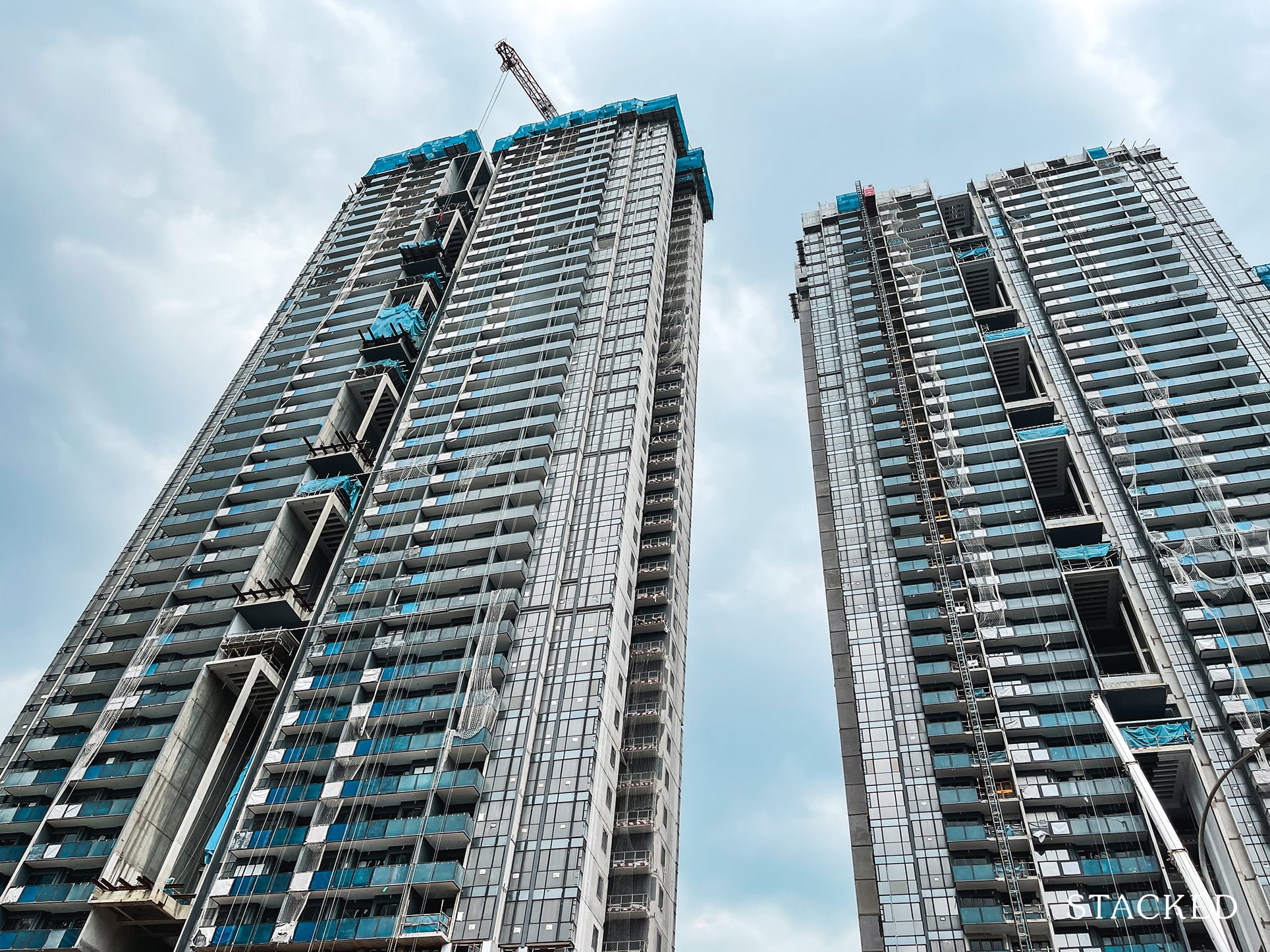
This was also underscored by a record-breaking sale at the time; a $1.003 billion bid for a plot of land along Stirling Road (today’s Stirling Residences), by Chinese developers Logan Property and Nanshan Group. This was the first time a residential land parcel managed to cross the $1 billion mark.
As you can see in the above links, the aggressive bidding by Chinese developers also troubled homegrown developers, who were forced to raise their own bids; and amidst all this, one question stood out:
With land prices so high, what were developer margins like?
From word on the ground, there was skepticism when Logan Property told the media that:
“The company has conducted detailed investment analysis to come up with the bid… (We believe) the project is profitable and meets the company’s internal margin and internal rate of return targets.”
It was an unfortunate time to be tight-lipped about the sort of margins they expected, as the comment fueled several speculative rumours. How could the developer have paid such record prices, and yet maintain a healthy margin? The immediate negative assumption was cheaper materials, and a compromise on quality.
Meanwhile, suspicions of quality aside, Chinese developers caused resentment in another way: buyers noticed the record land prices, and blamed the influx of Chinese developers for driving up home prices. Again though, the linked CNA report suggests this may not be entirely right, as Chinese properties were generally cheaper.
(It’s worth noting, by the way, that similar fears and resentment occurred in the nearby Australian property market during the same year).
The Kingsford Huray hiccup
Most expectations of poor quality didn’t come to pass. The only real noticeable hiccup was with Kingsford Huray, which broke some regulations; we covered the situation in this article.
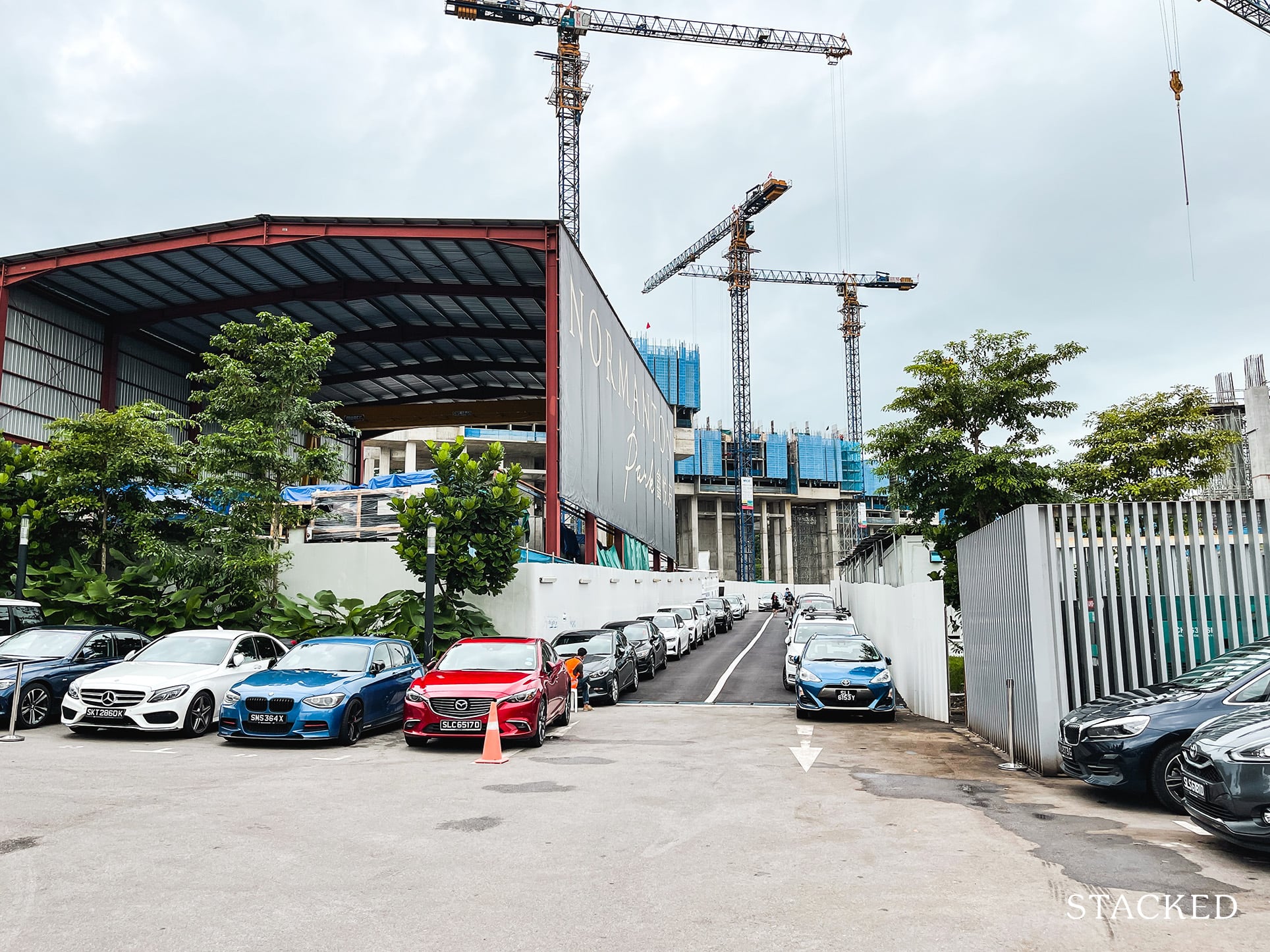
The problems with the Kingsford Waterbay project caused Normanton Park to be hit by a no-sale license. As if the reason wasn’t bad enough, there were also rumours that – due to the tight timeframe now faced by the developer – construction of Normanton Park would be rushed and possibly surface more issues later. However given that they had to face more stringent checks on the quality of their work as a result of the no-sale license, that added assurance seemed to play a part in the strong sales despite a shorter timeframe to sell.
As of 2024 however, Chinese developers have managed to shrug off the reputation for lower quality
Let’s take a look at several of the recent projects, to see how some of them have performed. Do note that we aren’t trying to say that these projects are more profitable, or better than local developers – but rather, how it’s less about the origin of the developers today.
Consider Stirling Residences, the property that kicked off the fuss. Despite the aforementioned suspicions, and initial complaints about workmanship in the early days, the property has performed rather well:
According to Square Foot Research, prices have moved from an average of $1,764 psf to $2,259 psf today; and the project has a perfect record of 152 profitable transactions with no losses.
More from Stacked
New Record For Landed Home Prices In Singapore: It’s Like An A+ in The Least Important Exam
If you’re thinking, “What? So low?”—It’s not. Not for landed property. The larger the property, the lower the price per…
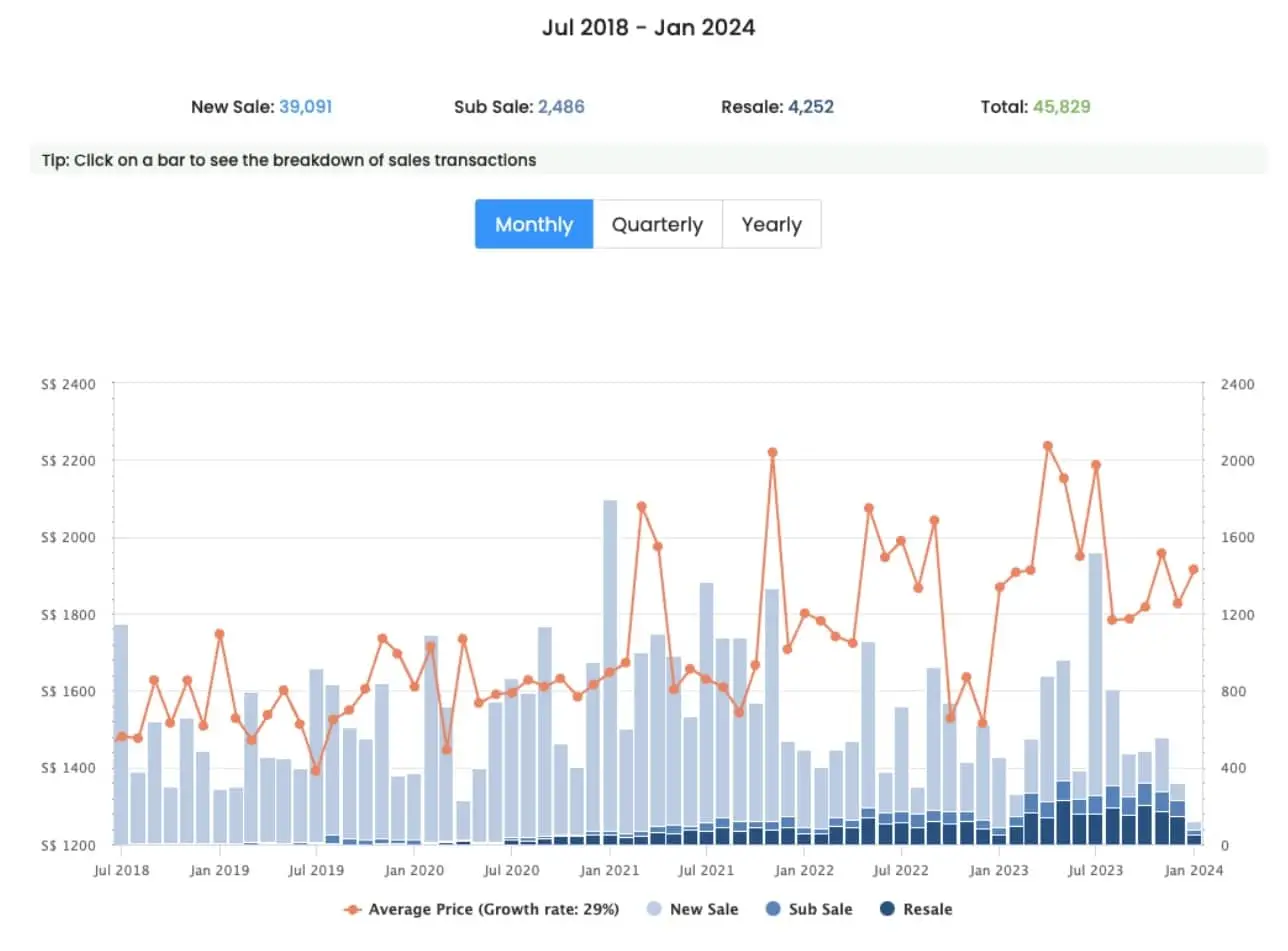
Compare this with projects outside District 3 (where Stirling Residences is located), and we can see a similar growth trend from $1,481 to $1,915 psf – about a 29 per cent increase, which is similar to how Stirling Residences has performed.
Next up, Kingsford Waterbay, the project that was hit with complaints about workmanship, also has a fairly decent performance:
Prices at Waterbay have appreciated from an average of $1,166 psf to $1,374 psf, with a record of 231 profitable transactions to 29 unprofitable ones.
Normanton Park, despite the no-sale license, was repeatedly a top-selling project over its sales period, such as in the first half of 2021 (of course, also from the fact that it is a mega-development).
Normanton Park was just completed last year, so there isn’t much of a resale record to look at (only two profitable transactions on record, with no losses). But looking at developer sales, the average price was around $1,763 psf in the earliest launch phases, and rose to $1,871 psf toward the end.
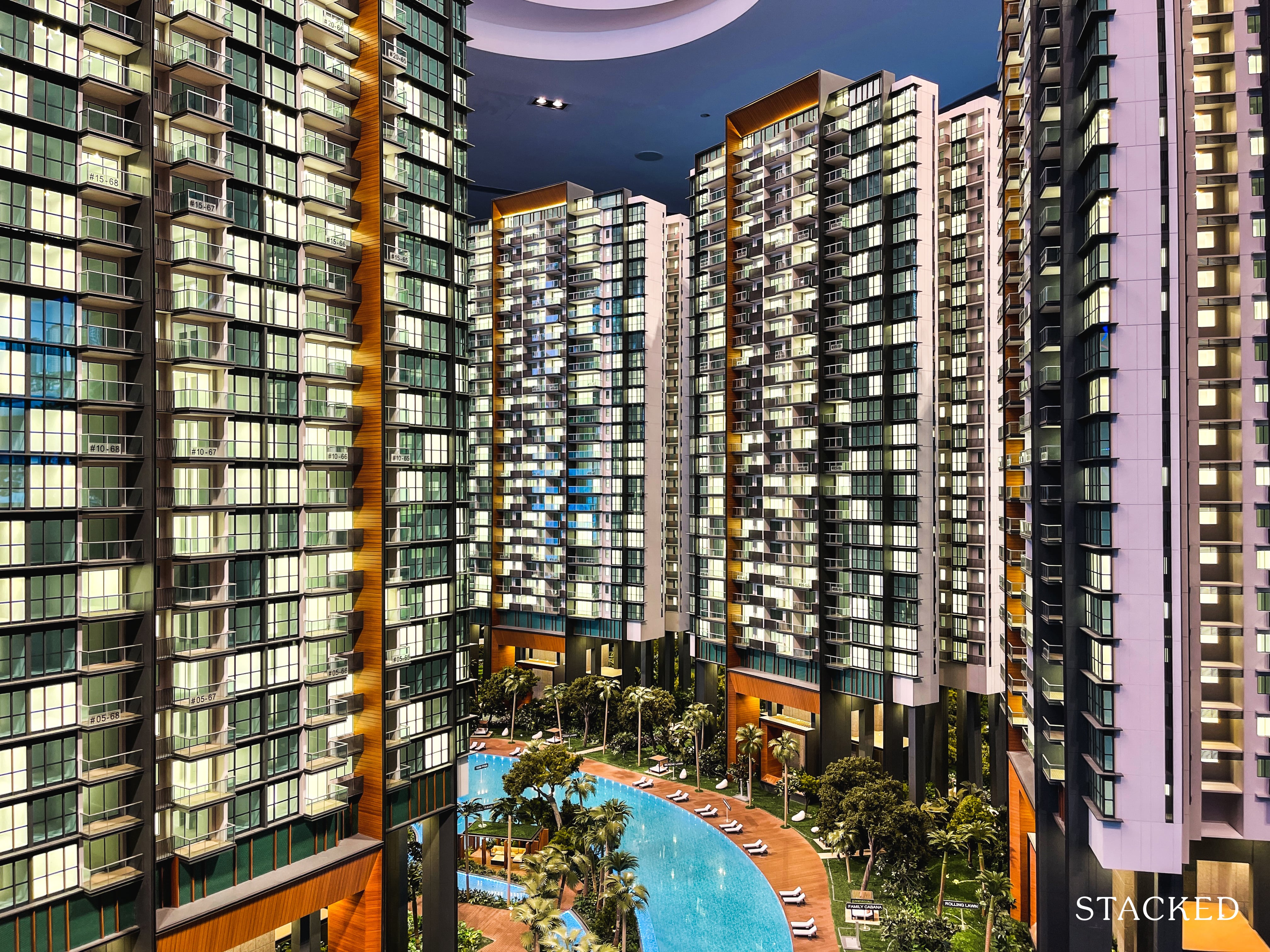
We’d also note that the resale transactions on record (only two) were around $2,144 psf.
Probably the most well-known Chinese developer here, Qingjian, has been active since 1999 – they were responsible for several ECs and DBSS projects like Natura Loft. Unfortunately, a few DBSS flats had a reputation for defects, even though that’s increasingly overlooked today.
So when Qingjian went into private condos, there was some concern over quality. However, one of the top performers in the market today, Jadescape, is by Qingjian; and this project has seen significant demand and appreciation:
Prices have risen from an average of $1,664 psf, to $2,193 psf, and Jadescape has a perfect record of 97 profitable transactions to zero losses. In fact, a seller recently made a cool $1.1 million profit – and from what we’ve heard on the ground the project seems to be quite well-received.
CCDC (a branch of China-based CSC Land Group) was already known for non-residential developments; they built Singapore General Hospital, for example. But one of their first major residential projects, Twin VEW, has also done well:
Prices rose from an average of $1,405 psf, to $1,747 psf today; and there’s a perfect track record of 80 profitable transactions with no losses.
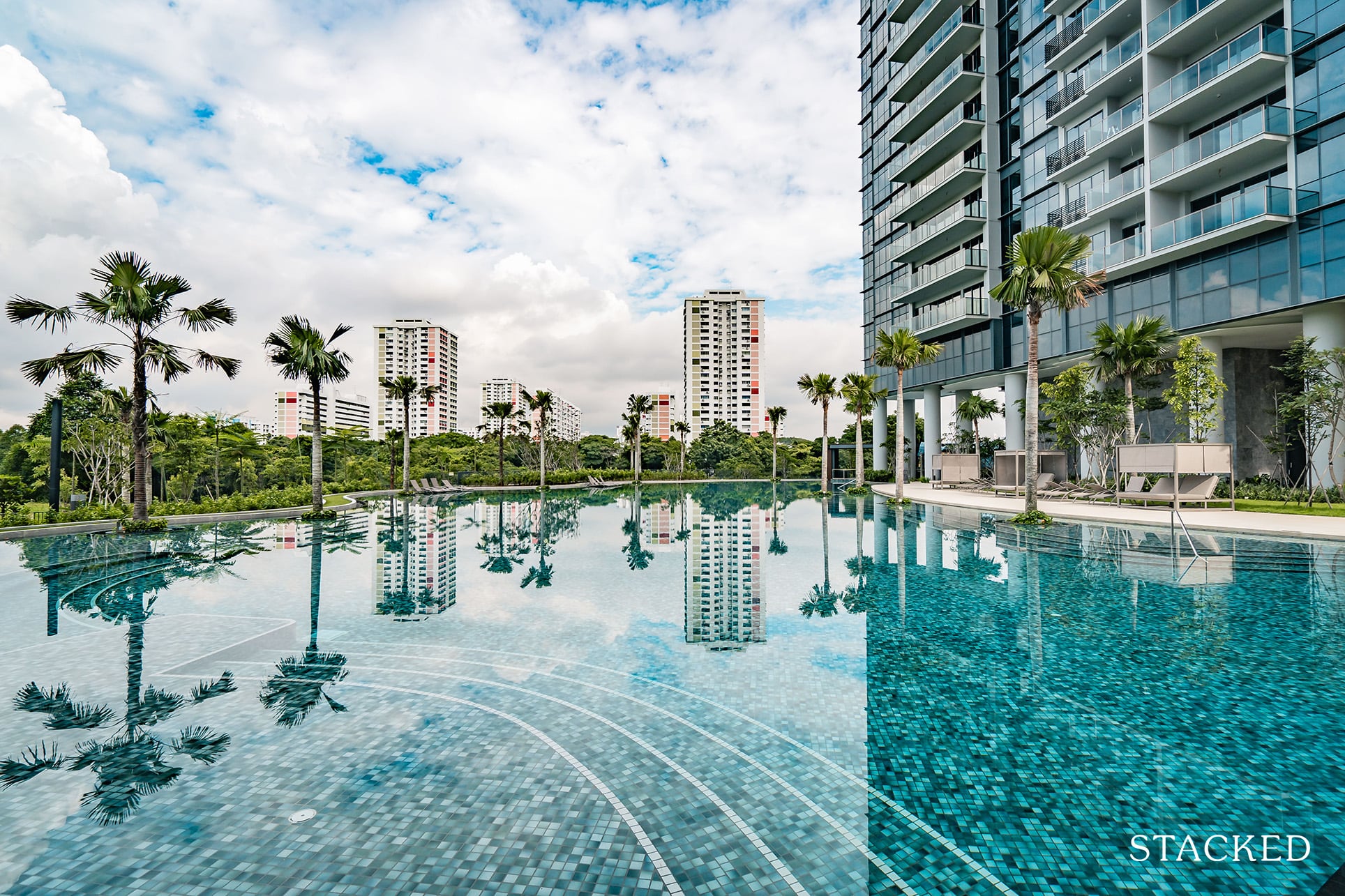
From reactions on the ground, buyers no longer show much concern over Chinese project quality
Realtors have said that few homebuyers now bring up the issue of the developers’ local or Chinese origin; and we suppose the reaction to Jadescape, Normanton Park, etc. suggests it’s not too big a deal to them.
And while we don’t have hard numbers to back this up, several buyers and agents have told us that from the recent wave of new launches that have been completed – that the overall quality from some of the Chinese developer’s projects seems to be faring better than some of the local ones.
One realtor noted that it’s across the causeway where Chinese developers may still face skepticism; partly due to the Forest City situation. Had a similar issue occurred in Singapore, Chinese developers may have found it a bigger hurdle to acceptance.
Nonetheless, in a local context, most Singaporeans are no longer extra wary of Chinese developers; and with the current real estate turmoil going on in China, we’re unlikely to see another crazy wave of en-bloc sales to panic the buyer side market. So it seems Chinese developers have finally managed to blend into the local landscape.
For more on the Singapore property market, as well as reviews of new and resale properties alike, follow us on Stacked. If you’d like to get in touch for a more in-depth consultation, you can do so here.
Ryan J. Ong
A seasoned content strategist with over 17 years in the real estate and financial journalism sectors, Ryan has built a reputation for transforming complex industry jargon into accessible knowledge. With a track record of writing and editing for leading financial platforms and publications, Ryan's expertise has been recognised across various media outlets. His role as a former content editor for 99.co and a co-host for CNA 938's Open House programme underscores his commitment to providing valuable insights into the property market.Read next from Property Market Commentary

Property Market Commentary A Wave Of New HDB Resale Supply Is Coming In 2026: Here’s Where To Find Them

Property Market Commentary 5 Key Features Buyers Should Expect in 2026 New Launch Condos

Property Market Commentary What “Lucky” Singaporean Homebuyers Used To Get Away With — That You Can’t Today
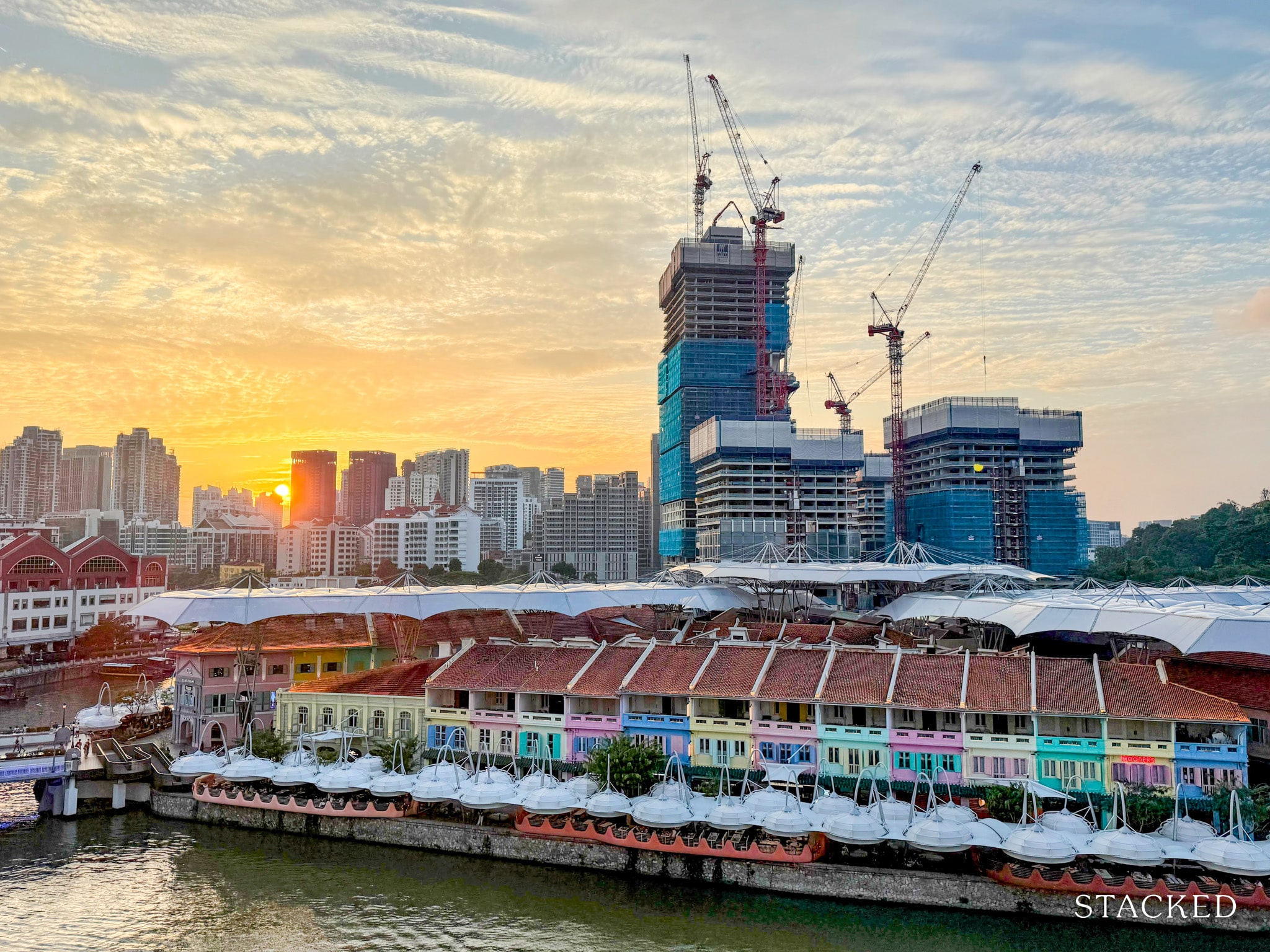
Property Market Commentary 7 Close To TOP New Launch Condos In 2026/27 For Those Looking To Move In Quick
Latest Posts

Landed Home Tours Why Singaporean Families Are Looking At This Landed Enclave From Around $4M

Singapore Property News Lentor’s First Condo Is Complete — The Early Profits May Surprise You

Property Advice We Own A $800K 1-Bedder And A $1.1M 3-Bedder: Is It Possible To Upgrade To A 4-Bedder Condo?

On The Market These Are Some Of The Cheapest 5-Room HDB Flats Left In Central Singapore

Pro This 698-Unit Ang Mo Kio Condo Launched At The Wrong Time — And Still Outperformed Peers

Singapore Property News $281.2M in Singapore Shophouse Deals in 2H2025 — But That Number Doesn’t Tell the Full Story

Property Investment Insights These Resale Condos In Singapore Were The Top Performers In 2025 — And Not All Were Obvious Winners

Singapore Property News CapitaLand–UOL’s $1.5 Billion Hougang Central Bid May Put Future Prices Above $2,500 PSF

Singapore Property News Why New Condo Sales Fell 87% In November (And Why It’s Not a Red Flag)

Pro How A 944-Unit Mega-Condo In Pasir Ris Ended Up Beating The Market
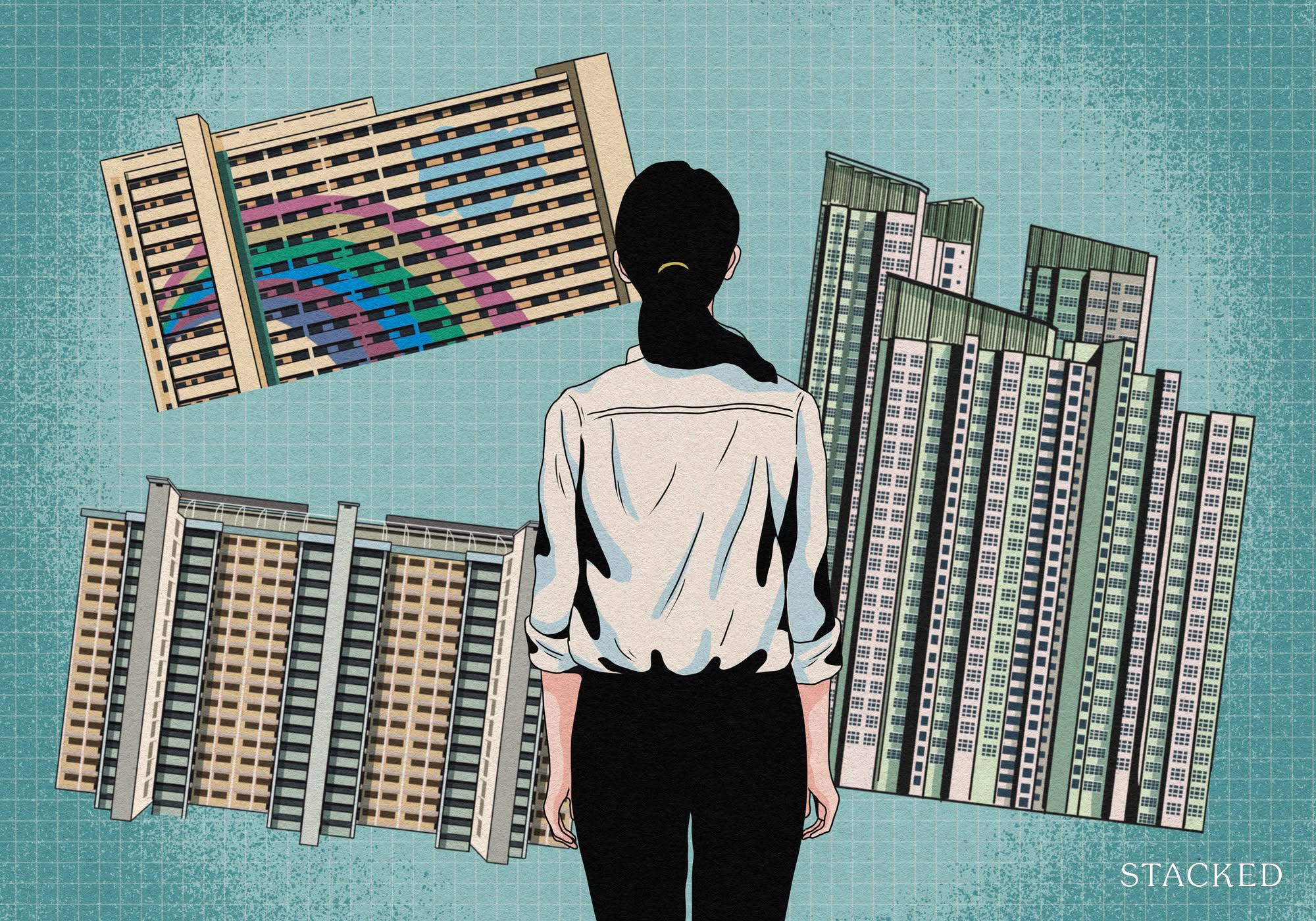
Property Investment Insights What Changed In Singapore’s Property Market In 2025 — And Why It Matters
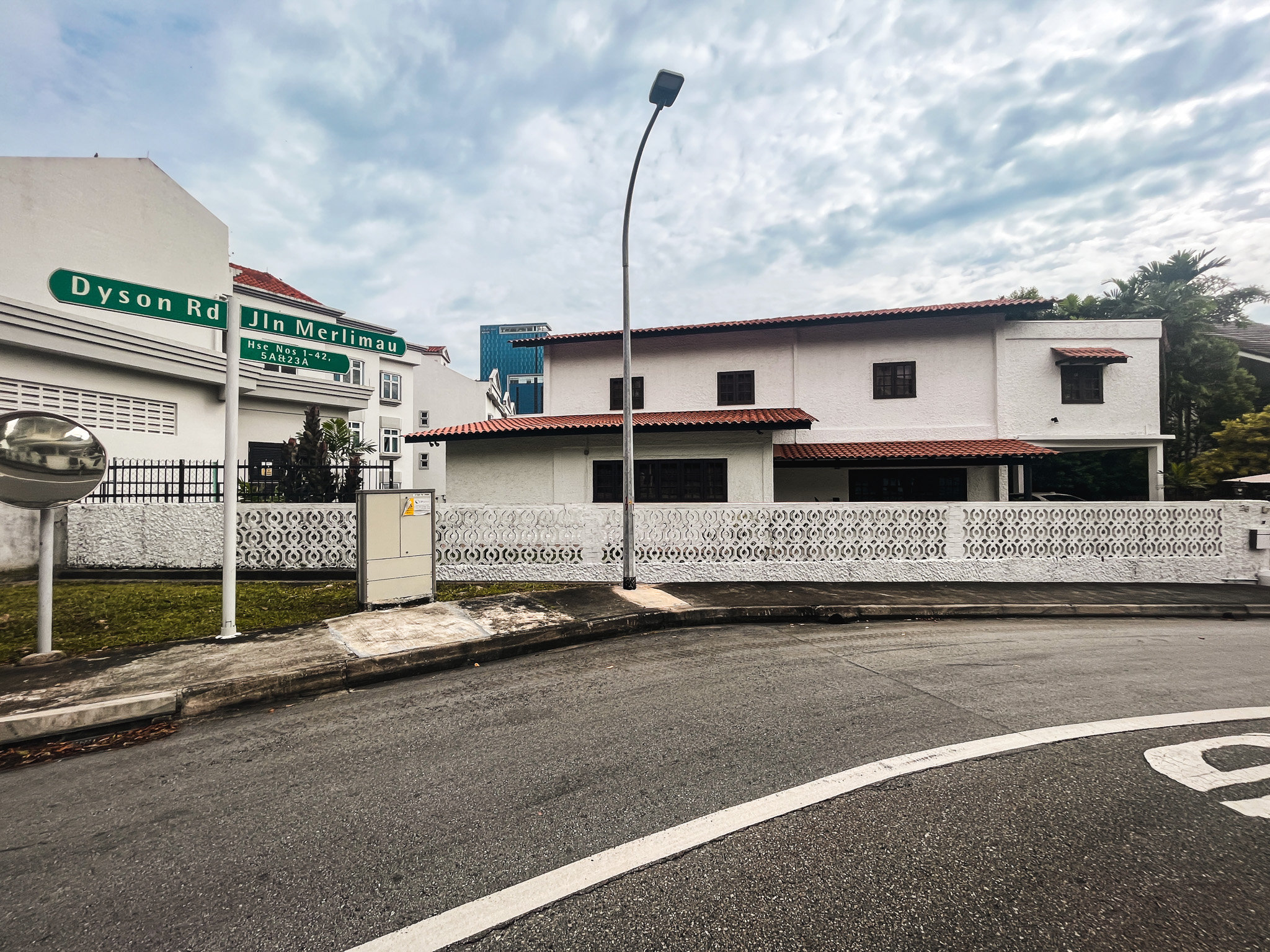
Editor's Pick We Toured A Quiet Freehold Landed Area Near Reputable Schools — Where Owners Rarely Sell

Singapore Property News How Much Smaller Can Singapore Homes Get?

Editor's Pick The Biggest Mistake Singaporeans Make When Analysing Overseas Property

Pro How Much More Should You Really Pay for a Higher Floor or Sea View Condo?
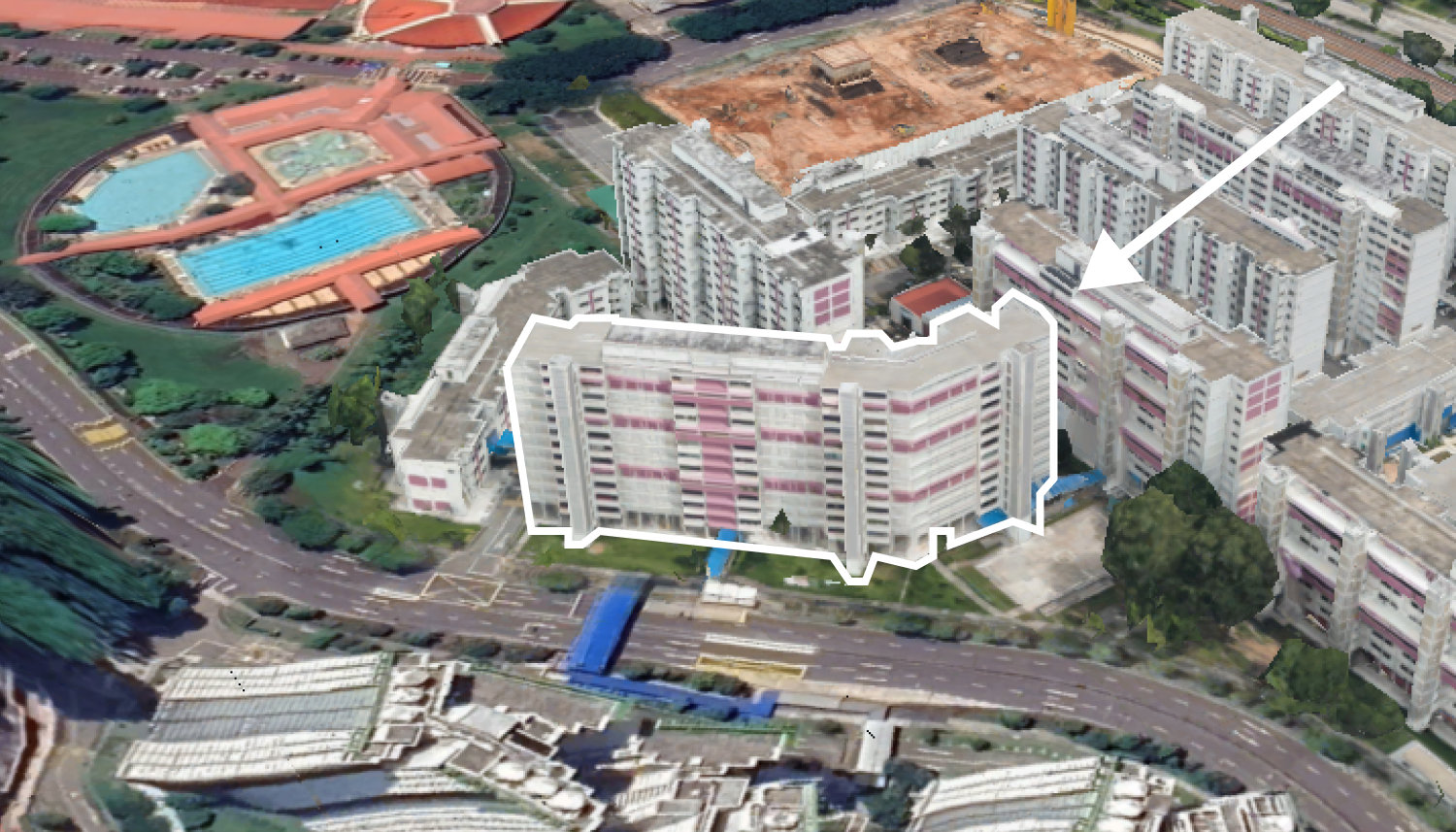


I am skeptical that the CCP develops will install some gadgets to spy on Singapore!
agreed, never trust the communists
I guess editor can see the 2 comments posted above (or before I posted this comment) that the anti China is ridiculously high in Singapore. Which can be seen in our mainstream media ie SPH Media and Mediacorp (which includes CNA) despite senior cabinet ministers such as PM and DPM giving Singapore’s official stance as not taking any sides. But truth is, society-wide, SG IS taking the side of US (and its cronies, opps allies) which means anti China now